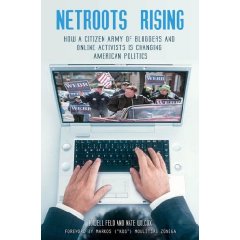 The following is by Virginia House Democratic Leader David Toscano:
The following is by Virginia House Democratic Leader David Toscano:
State of Play:
A Preliminary Look at the Virginia Budget
A Preliminary Look at the Virginia Budget
With the 2015 election over, legislators and commentators are now turning their attention to the upcoming General Assembly session and Governor McAuliffe’s first two-year budget. Even though the Governor has been in office almost two years, this is his first budget: it is not widely understood that a governor does not have a chance to propose a budget that is totally his own until well into his second year in office. In Virginia, we have two-year budgets and this is Gov. McAuliffe’s chance to establish a legacy of budgetary priorities. His budget will be unveiled to the money committees in the House and Senate on Thursday, December 17, 2015. Between now and then, you’ll begin to read about possible initiatives in the proposed budget and will undoubtedly hear criticisms from the Governor’s detractors of his various proposals.
(lots more on the "flip")
Budget Priorities, Assumptions & Projections
Before your eyes begin to glaze over as you read and hear about budgetary lingo like “re-benchmarking for the standards of quality,” “budget drivers,” “our budget is structurally sound,” and “claw backs,” please take a moment and think about the significance of the budget.
Budgets are also based on assumptions and projections. We are not precisely sure how much money we have to appropriate until tax dollars are actually collected. So we project figures. We usually expend close to our projected revenues, leaving us some cushion for the possibility that the economy will not be as robust as we think it will be. That is prudent budgeting, but it is also where politics and economic philosophy intrude. If your projections are too conservative, you might not fund a critical program; if too liberal, you could create a shortfall, requiring cuts in future years.
Traditionally, the House and Senate have used different assumptions in building their budgets, with the House generally more conservative in projecting revenues. The House Appropriations Committee and staff are generally less bullish on the economy, projecting the growth in revenues at 3.2% in fiscal 2017, and 3.3% in fiscal 2018. In contrast, the Senate Finance Committee and staff are projecting 3.6% and 3.8% in the same years, respectively. This difference will mean millions of dollars over the next two years.
The Governor will also make projections when he releases his budget, and it will be interesting to see what they are. If he builds Medicaid expansion into the budget, the revenue growth is likely to be much higher than either the House or the Senate money committees have assumed, and his budget is likely to be more robust. This will set up a direct conflict between the spending the Governor wants and the constraints that the Senate and House Republicans will put on the budget because of their refusal to accept federal monies to expand Medicaid.
Our budgetary challenges in recent years have occurred because of two factors. First, the Virginia economy has not recovered from the 2008 recession as well as it has historically done. Second, federal sequestration has decreased employment and brought less growth, especially in Northern Virginia. Virginia ranked 49th among the 50 states in growth for 2014 and we have been lagging behind places like Alabama and Maryland since 2010. Unemployment rates have declined somewhat, but wages have largely been flat since 2009. Part of this has to do with the effect of decreases in federal procurement, especially in Northern Virginia. There are some signs that Northern Virginia is slowly recovering, but we have a long way to go and we are not likely to return to the expansive growth rates of ten years ago without some structural changes in our economy.
Considerations To Be Made
With this background, here are some budget questions and issues we will debate in the upcoming next session:
The largest portion of state revenues is spent on education. The last two-year budget totaled $36.8 billion, almost half of which involved transfers to local governments. The largest section of those transfers to local governments is for public education, the number one priority of many of us in the General Assembly. This is where the Commonwealth’s spending comes to life – in the quality of our classrooms, the talents of our teachers, and the magic that occurs when students are being taught and learning at their full potential. And this is where much of the debate will occur in this budget cycle. We are under an obligation required by state law to “re-benchmark for the standards of quality” every two years. In everyday parlance, this means that we have to total up the costs of providing basic education services in the Commonwealth and then put enough money in our budget to fund it. In actuality, we do not totally fund all of the demands of public education; the state pays only a portion, and local governments need to find the rest. Consequently, every dollar not allocated by the Commonwealth for education creates more pressure on the localities and their taxpayers. In Charlottesville and Albemarle, we are very generous in spending local dollars on education; our community believes that educational investments are necessary to maintain our local school divisions. Other localities find this more difficult because their tax base is not as strong. Virginia’s per pupil spending state-wide is not much higher than it was in 2007, and many Democrats and some Republicans believe more investment is needed. Re-benchmarking is expected to cost the state an additional $450 million in the next two years, but I would expect the Governor’s budget will include more money for education than just for re-benchmarking.
With this background, here are some budget questions and issues we will debate in the upcoming next session:
- After we re-benchmark for the Standards of Quality, how much additional money will be allocated for other educational initiatives? We know the Governor is very supportive of pre-K education and observers predict that there will be more money in his budget for that. But historically, House Republicans have been skeptical about claims in support of pre-K and are likely to resist expanding the program. And what about higher education? Democrats have been focused on reducing the impact of tuition increases on rising student debt. In-state undergraduates pay 47% of the cost of education, up from 23% in 2001-02 and much more than the state targeted rate of 33%. Many on both sides of the aisle believe that we need to invest more in our research universities, such as U.Va., and provide greater incentives to commercialize research breakthroughs out of our universities to create new businesses and spur economic opportunity. We will likely see some new initiatives to spur university-business collaborations in bioscience, manufacturing, and cyber security, all designed to help build the new Virginia economy.
- What additional initiatives will we adopt to encourage the Governor's New Virginia Economy Workforce Initiative? Agreement exists that we need more effective workforce development. We know two-thirds of all new jobs do not require college degrees, but a recent JLARC report indicated that our investment in workforce has not been as productive as it needs to be. Some change can occur without money, but other initiatives, especially in our community colleges, will require state investment to be effective.
- Will the legislature seriously attack the proliferation of tax preferences for industries – most notably coal – that no longer work for their intended purpose of creating jobs or economic opportunity? Eliminating credits for coal, for example, would create between $50 to $100 million in revenue, enough to fund a 2% statewide teacher raise.
- Will the legislature finally decide that it makes good economic sense to expand Medicaid and therefore provide healthcare coverage to over 300,000 Virginians while shoring up our budget, our rural hospitals, and creating jobs? Right now, we’re sending in excess of $4 million a day in our taxes to Washington, D.C., which could be brought back to Virginia if we expanded Medicaid. The Governor is likely to put a provision in this budget that will bring those dollars back to Virginia, but Republicans remain steadfast in their opposition. There is no doubt that state Medicaid spending is a huge driver of the additional demands on the budget. Virginia has adopted a number of reforms, which has had the effect of limiting the increases in Medicaid spending, but because so much of the additional costs are driven by increasing numbers of older people with special nursing home and other expensive needs, the program continues to expand. The good news is that the percentage increase in Medicaid spending is likely to decline.
- Will the budget include pay increases for faculty, teachers, and other state employees? A 2% faculty COLA increase would cost $33 million to the state in the next two years. A 2% teacher increase amounts to $83.2 million per year.
In the next several months, you’ll read more about so-called “wedge” issues – guns, Syrian refugees, abortion – and I hope you engage in these conversations. But the major action always involves the budget, and I will continue to keep you informed as we go through the process.
We have a long way to go before we get to a biennial budget and I will continue to try to provide insights about the Governor’s proposals and the legislative responses to them.

